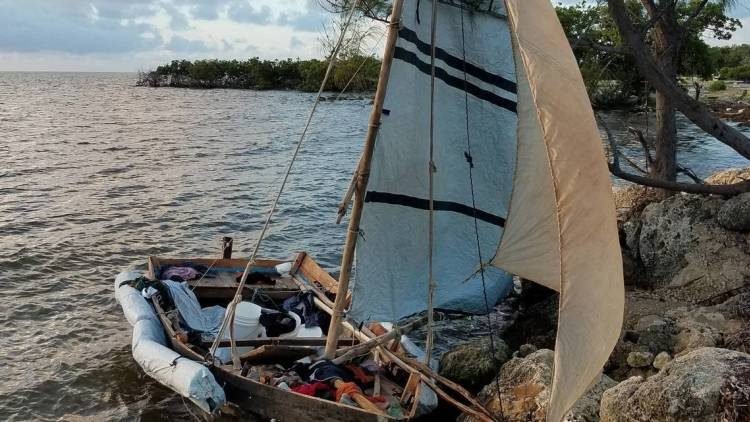U.S. immigration authorities arrested this Friday two Cuban immigrants who arrived in a boat in the Florida Keys and who will be deported to the island, Keith Smith, a spokesman for the office of the state’s Customs and Border Protection (CBP), told EFE news agency.
The spokesman said that Border Patrol officers at the Marathon station were alerted by the Sheriff’s Office in Monroes County, where this archipelago is located, about several immigrants’ “maritime traffic.”
He noted that the Border Patrol is investigating the circumstances and reports about several immigrants who would have arrived in the area along with those who were arrested. The number of the others who arrived is seven, according to local media.
“Two persons have been arrested and will be prosecuted for their expulsion,” said Smith.
This Thursday, the Nuevo Herald had reported the arrival of “between six and seven Cuban immigrants” to the Florida Keys, citing a CBP statement. According to the publication, the migrants “quickly dispersed after reaching land,” but during the day a woman and a man had been found and taken into custody to be later returned to the island.
Last September the United States immigration authorities deported the largest group of Cubans (120) on a flight to Havana as part of an agreement signed during the last days of the Barack Obama administration (2009-2017), by which the island promised to receive the deportees.
At the end of his term, Obama also canceled the “dry foot/wet foot” policy enacted in 1995, whereby Cubans who touched U.S. territory were favored with the Cuban Adjustment Act and could stay in the country and even obtain permanent residence, while those caught at sea were deported to the island.
Shortly before the elimination of this benefit, an unusual arrival of migrants from Cuba was registered in the Straits of Florida, given that many anticipated the end of the “dry foot/wet foot” policy, a migratory wave that has declined in recent years.
After the cancellation of the policy, the crossing of the so-called “rafters” was markedly reduced and became more unusual, but this year there are more and more frequent interceptions of Cubans in the Straits of Florida. The migration increase also extends to the southern border of the United States, to which according to the Nuevo Herald about 20,000 Cubans arrived during the last fiscal year.
EFE / OnCuba










